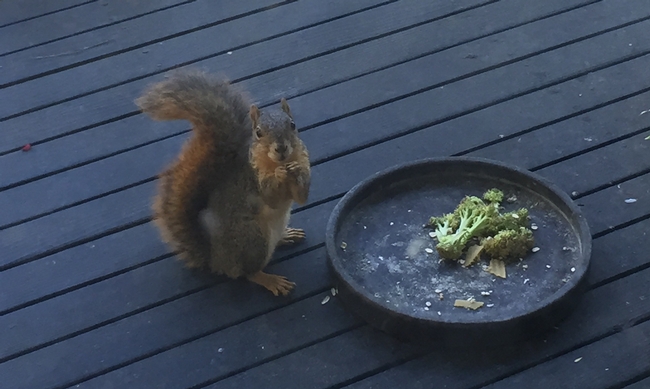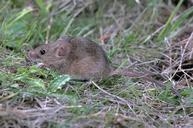
California law states: “Except as otherwise authorized in these regulations or in the Fish and Game Code, no person shall harass, herd or drive any game or nongame bird or mammal or fur-bearing mammal. For the purposes of this section, harass is defined as an intentional act that disrupts an animal's normal behavior patterns, which includes but is not limited to, breeding, feeding or sheltering. This section does not apply to a landowner or tenant who drives or herds birds or mammals for the purpose of preventing damage to private or public property, including aquaculture and agriculture crops.”
Feeding wild animals may help non-native, invasive, nuisance and feral animals survive, says Niamh Quinn, UC ANR Cooperative Extension advisor in San Diego and Los Angeles counties.
“Many of these species have public health risks associated with them, which can cause serious illness in humans,” Quinn said. “Rats and squirrels carry fleas that transmit plague and feral cats also carry fleas that carry typhus. Both of these diseases can be transmitted to people and cause serious illness, or even death.”
During the summer of 2015, two tourists at Yosemite National Park contracted plague, but humans are not the only ones at risk from disease. Wildlife can also become more exposed to disease as a result of people feeding them.
The Pacific Flyway is a major north-south flyway for migratory birds in America, extending from Alaska to Patagonia. As part of the Pacific Flyway, California is a temporary home for many species of birds. Due to people feeding them, some of these birds no longer naturally migrate.

Sustaining nonnative and feral animals can also have negative impacts on native wildlife, she said.
“For example, the eastern fox squirrel, which has now been released in many cities in the state, is competing with the native western gray squirrel,” said Quinn. “Sustaining the nonnative and invasive eastern fox squirrel could further aid in its distribution in the state, which would spell disaster for the native gray squirrel.”

“Not only do these species have public health issues associated with them, they also compete with native wildlife,” Quinn said. “They prey on bird eggs and can compete with native rodents for food resources.”
Indirect feeding of wildlife can also lead to serious conflicts between people and wildlife, Quinn warned.
“Bears that become accustomed to human food often have to be trapped and re-released and some are even euthanized,” Quinn said. “Coyotes are now common-place in some of our cities in California. Relying on human food could cause habituation of these wild animals and cause conflicts to rise. It is important that we cover our trash cans and make sure that we keep wildlife out of them.”
The California Department of Fish and Wildlife has an initiative called “Keep Me Wild” with the slogan “Wild animals don't need your handouts. They need your respect.” Quinn urges people to consider the long-term welfare of wildlife the next time they are tempted to feed wild animals.
For more information about managing pests around homes, visit the UC ANR Statewide Integrated Pest Management Program website: http://www.ipm.ucanr.edu/PMG/menu.homegarden.html.